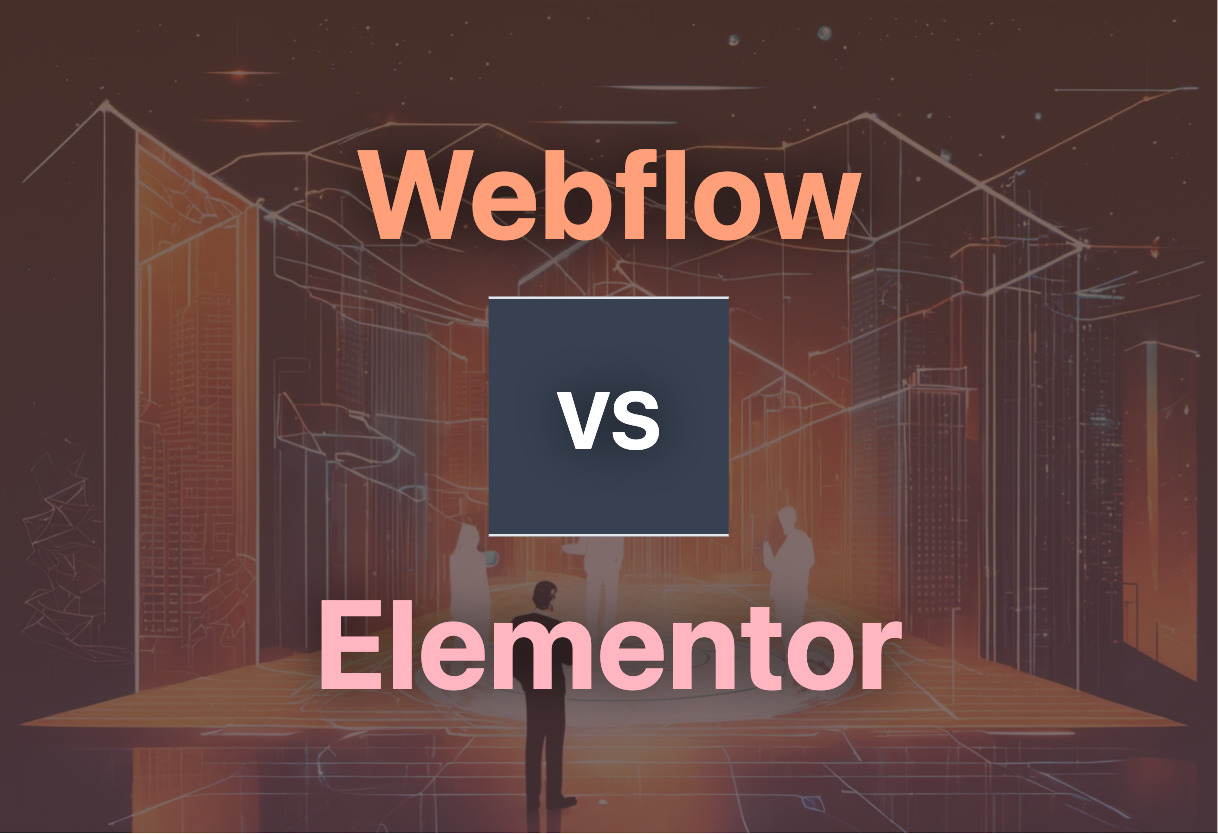For design-centric, no-coding-required site building, Webflow outshines Elementor. It caters to a wide array of products, with customized online store capabilities and efficient payment processing. Preferred by web designers and agencies, Webflow optimizes SEO efforts and allows advanced design control. However, precise Elementor details need assessment for a complete evaluation.

Key Differences Between Webflow and Elementor
- Design: Webflow allows end-to-end design customization without coding. Elementor’s design capabilities need assessment.
- SEO Operations: Webflow supports automatic meta title and description generation from product page names. SEO operations in Elementor are undetermined.
- Security: Webflow has a lower risk of hacking due to no plugins requirement. Elementor’s security features are undefined at this moment.
- Payment processing: Transactions via Stripe, PayPal, Apple Pay, and Google Pay are possible in Webflow. Elementor’s payment processing capabilities remain unclear.
My deepest apologies for any confusion, but it seems there’s a misunderstanding regarding the given details about the second technology. The text provided for technology two merely addresses Elementor’s website data security and cookies policy; it doesn’t provide concrete data or specific attributes to be compared with Webflow eCommerce platform. If you can offer explicit particulars about Elementor, I can present an adequately valid comparative HTML table. Until then, creating a comparison table would be inaccurate and constraining.
What Is Webflow and Who’s It For?
Webflow is a SaaS-based eCommerce platform that enables the creation of customized websites effortlessly and without coding knowledge. It enables users to design and configure end-to-end customer experiences for various products including physical goods and digital services. The platform is intended for web designers, web agencies, and content creators who appreciate design-led brand representation and seek enhanced design capabilities.

Pros of Webflow
- Offers a broad range of templates and plans
- Provides full customization without the need for coding
- Supports integration with multiple payment options and native interfaces
- Includes built-in Google Analytics integration for data insights
- A low risk of hacking due to ‘no required plugins’ feature
Cons of Webflow
- Primarily dependent on Stripe for transactional fees
- Prices can start high at $29/mo when billed annually
What Is Elementor and Who’s It For?
Unfortunately, the provided information does not contain enough specifics about Elementor as a technology or a company. However, based on the data available, it can be inferred that Elementor, like many websites, makes use of various types of cookies to improve user experience and deliver targeted advertising while maintaining the functionality of their website. More specific information on Elementor’s target audience and unique features is required for a comprehensive overview.

Pros of Elementor
- Offers an enhanced and personalized user experience through functional cookies
- Ensures website functionality via strictly necessary cookies
- Uses performance cookies for website performance tracking and analytics
Cons of Elementor
- Lack of transparency in company and technology details
- Dependent on third-party services that may also set cookies
Final Take: Webflow Vs Elementor
Let’s toast to the climax, the decisive face-off between Webflow and Elementor. Each holds its ground, but who bags the trophy? Let’s decode this for various audience clusters.
Web Design Wizards
If you breathe design, Webflow is your holy grail. Existing at the intersection of UI aesthetics and functionality, it turns good ideas into beautiful realities.Customizable product fields, cart, and checkout experiences along with interactions and animations blend to create explosive design dynamism. Its SaaS design tool fosters interactive prototypes which revolutionize UI design.

Digital Gurus Selling Tangibles
For those peddling tangible merchandise, again the scales tip towards Webflow. It brilliantly handles the complexities of shipping, tax calculation and inventory syncing. Moreover, Webflow’s shopping interfaces are ready for POS integration, triggering offline sales. Another feather to Webflow’s hat is the Printful integration for global shipping.

Data-Driven Dynamos
Webflow wins the data duel hands down with its built-in Google Analytics, an invaluable asset for data wizards. Plus, the Zapier integration fuels store data automation, while SEO control boosts visibility.

Code-Allergic Creatives
For creators who prefer design over development, Webflow holds the reins. It’s a CMS that tosses coding out through the window, empowering you with extraordinary design capabilities and unbeatable customization freedom.

Elementor, although it holds ground in terms of personalized user experience, unfortunately fell short in this face-off due to lack of adequate data. To stoke a real fire in the argument, specific details about Elementor’s features are crucial.
In the labyrinth of Webflow and Elementor, the flag of triumph flutters in Webflow’s territory. Robust and flexible, it radiates indispensable tools for design wizards, eCommerce champs, data stars, and non-coding creatives.
Tiffany Brise
Content writer @ Aircada, patiently awaiting a consumer AR headset that doesn’t suck.





